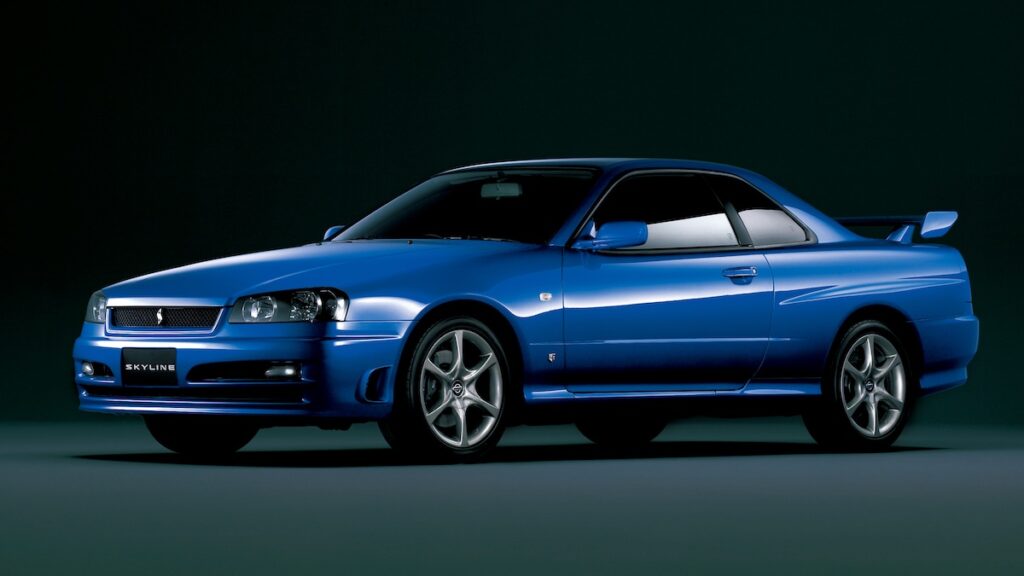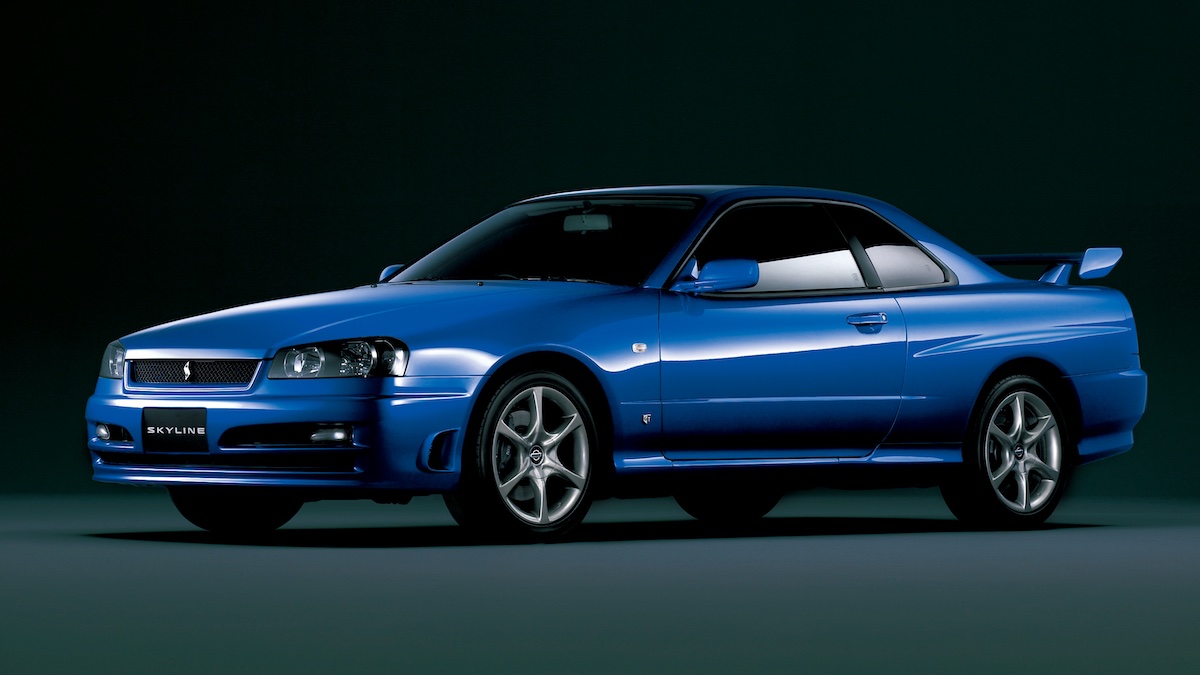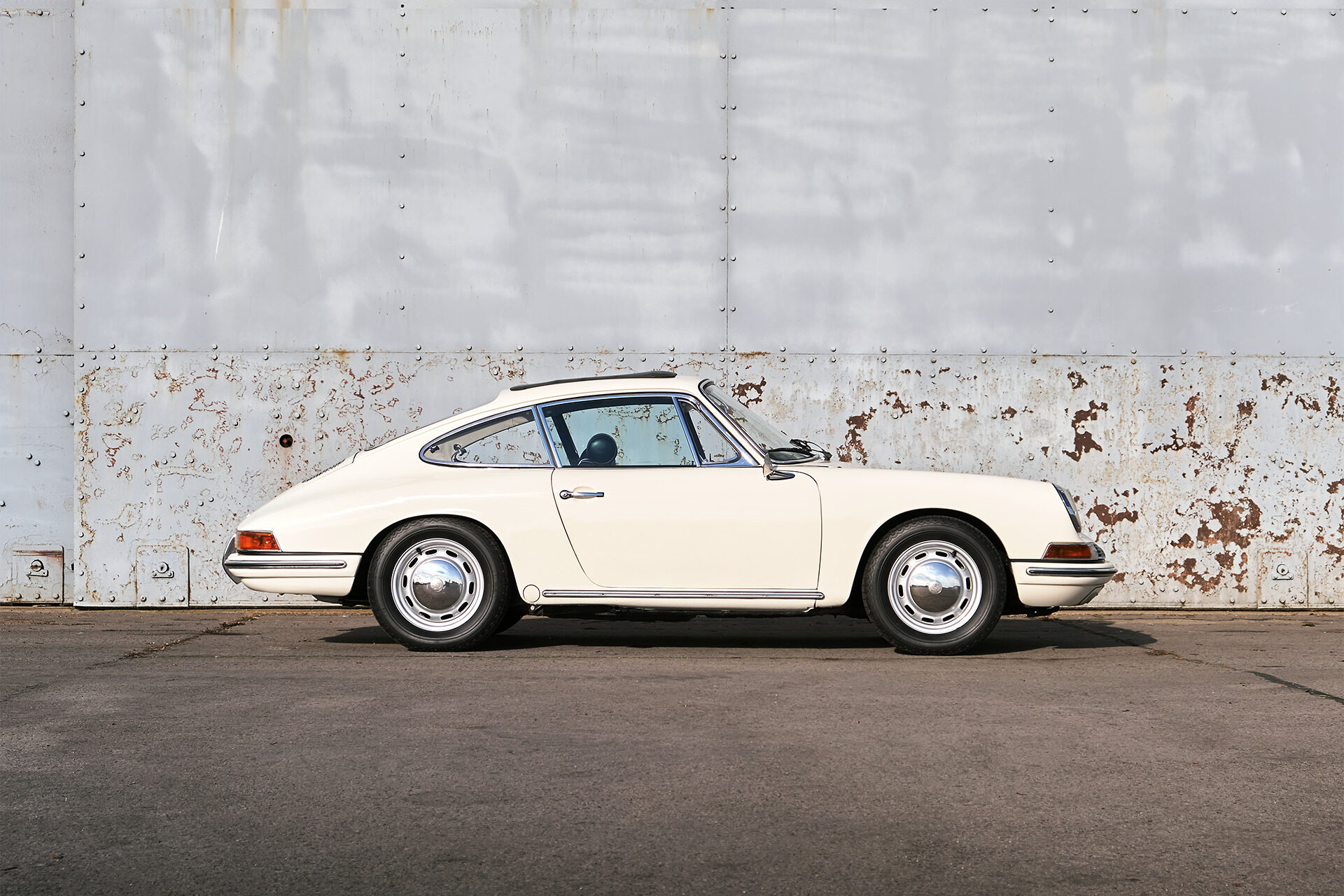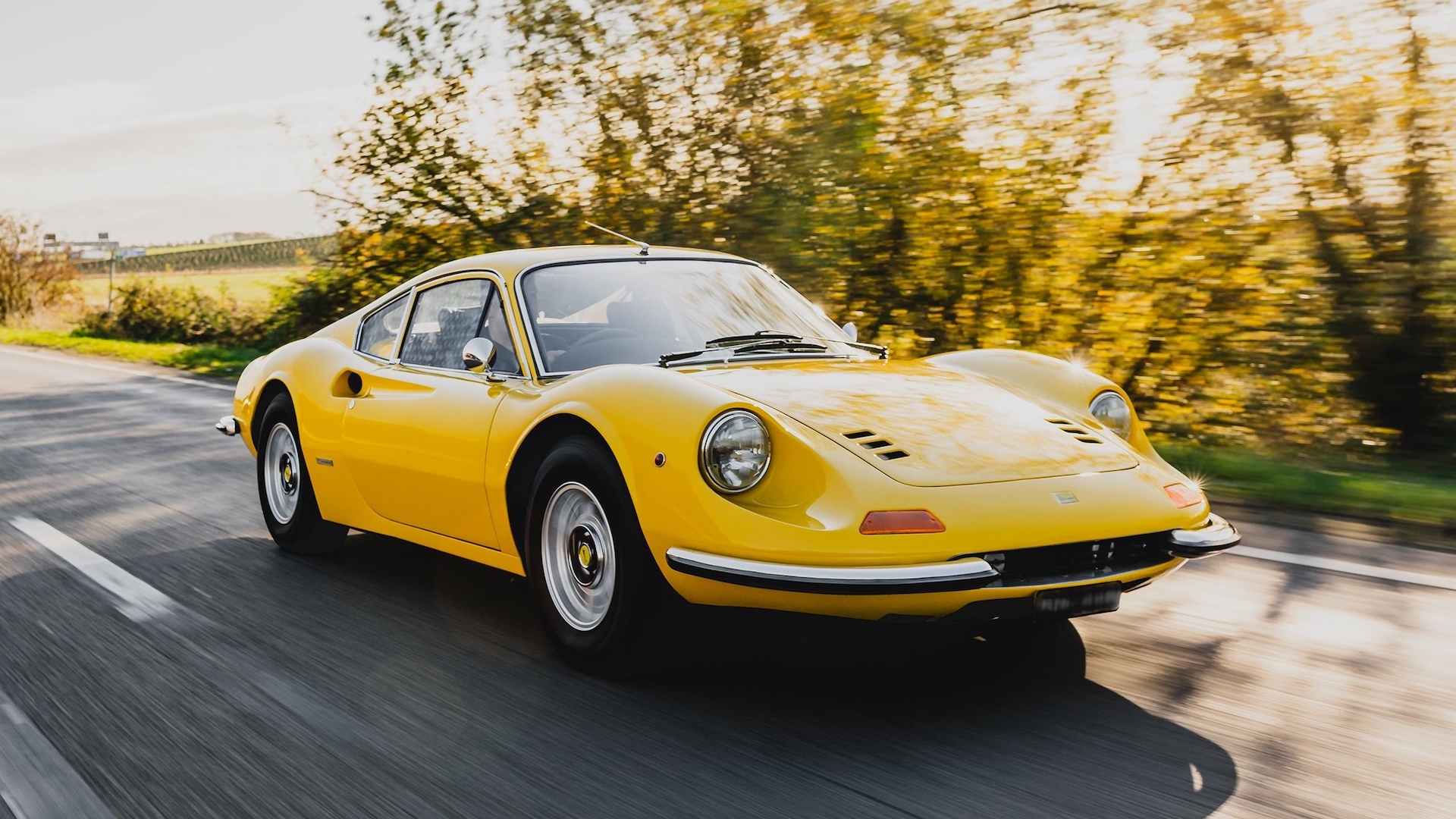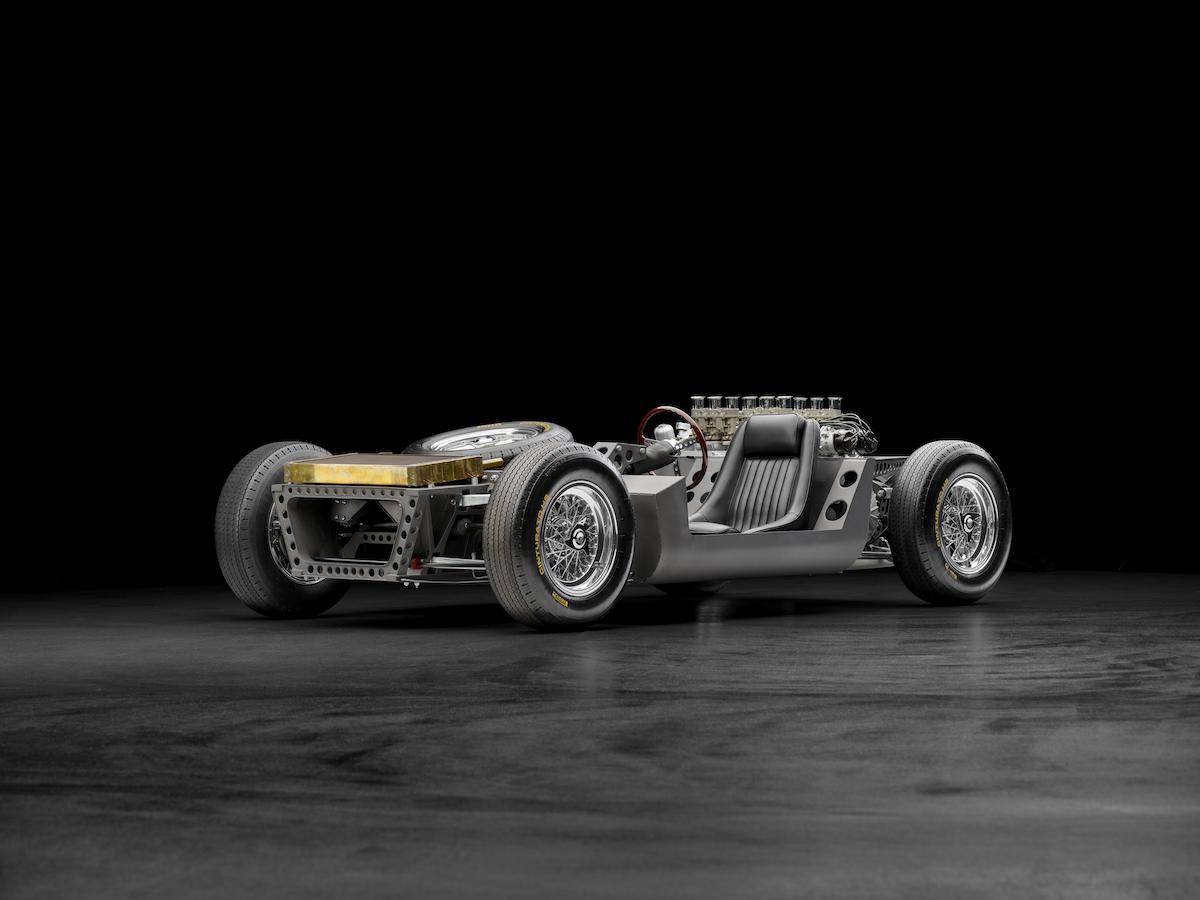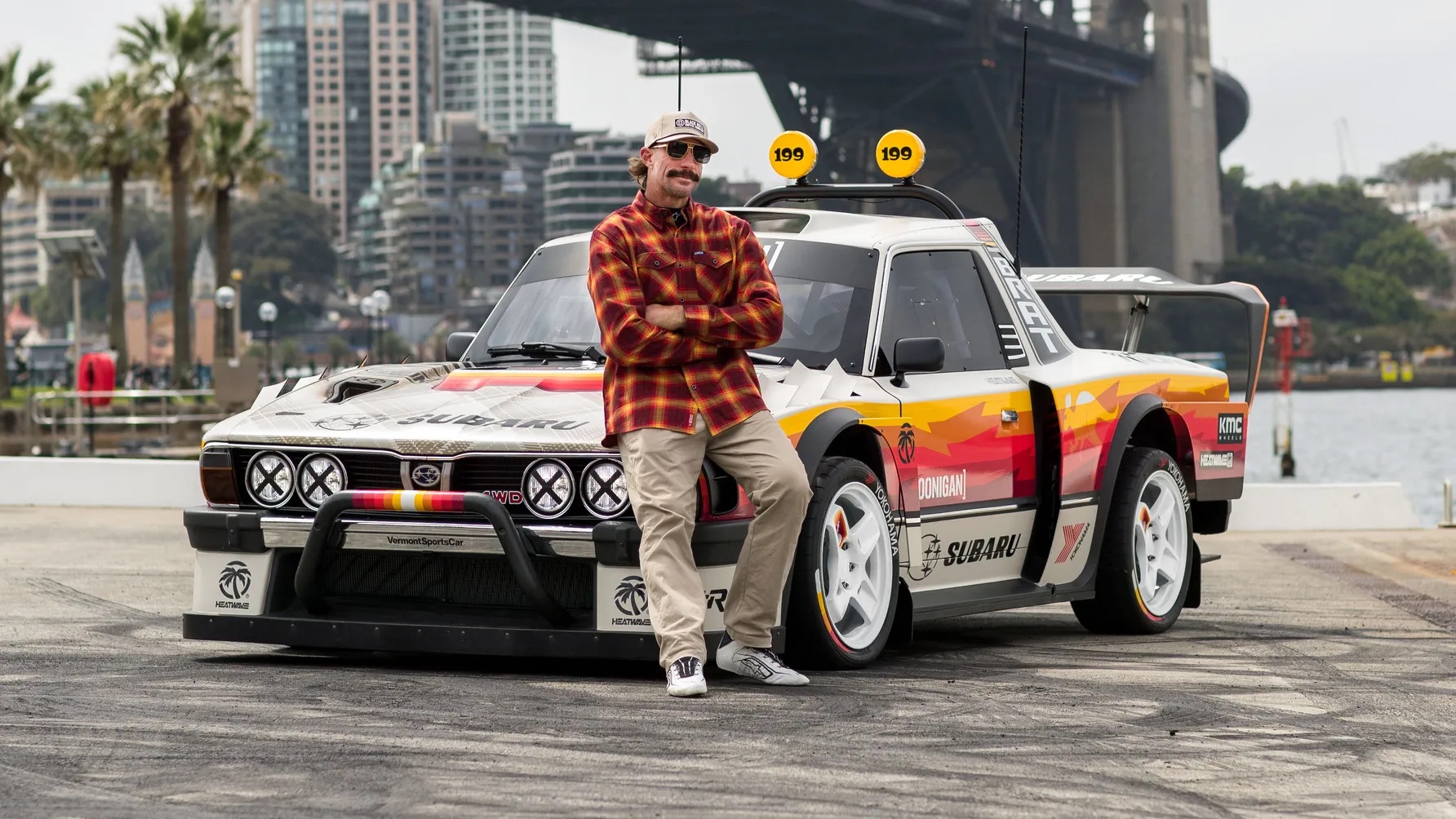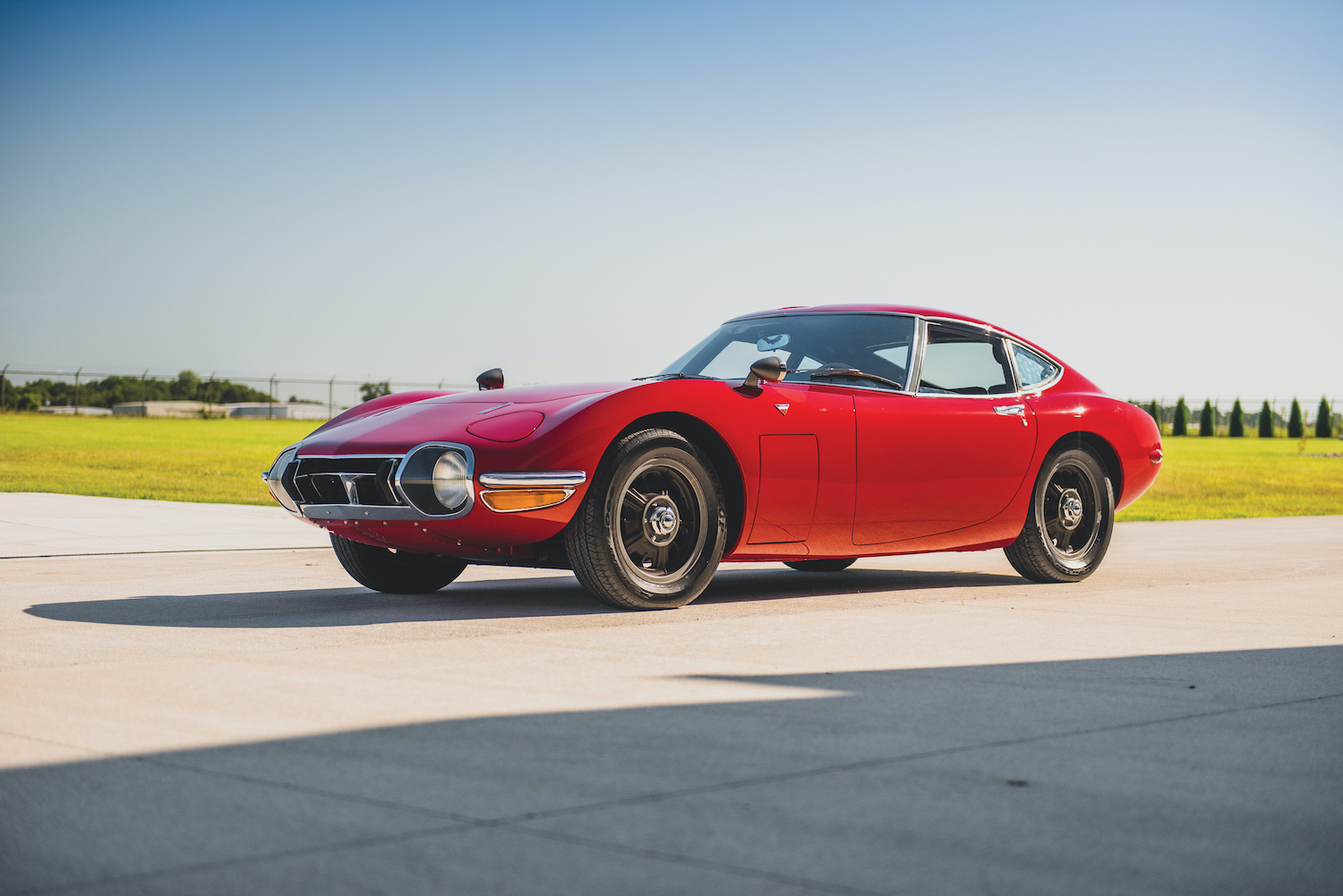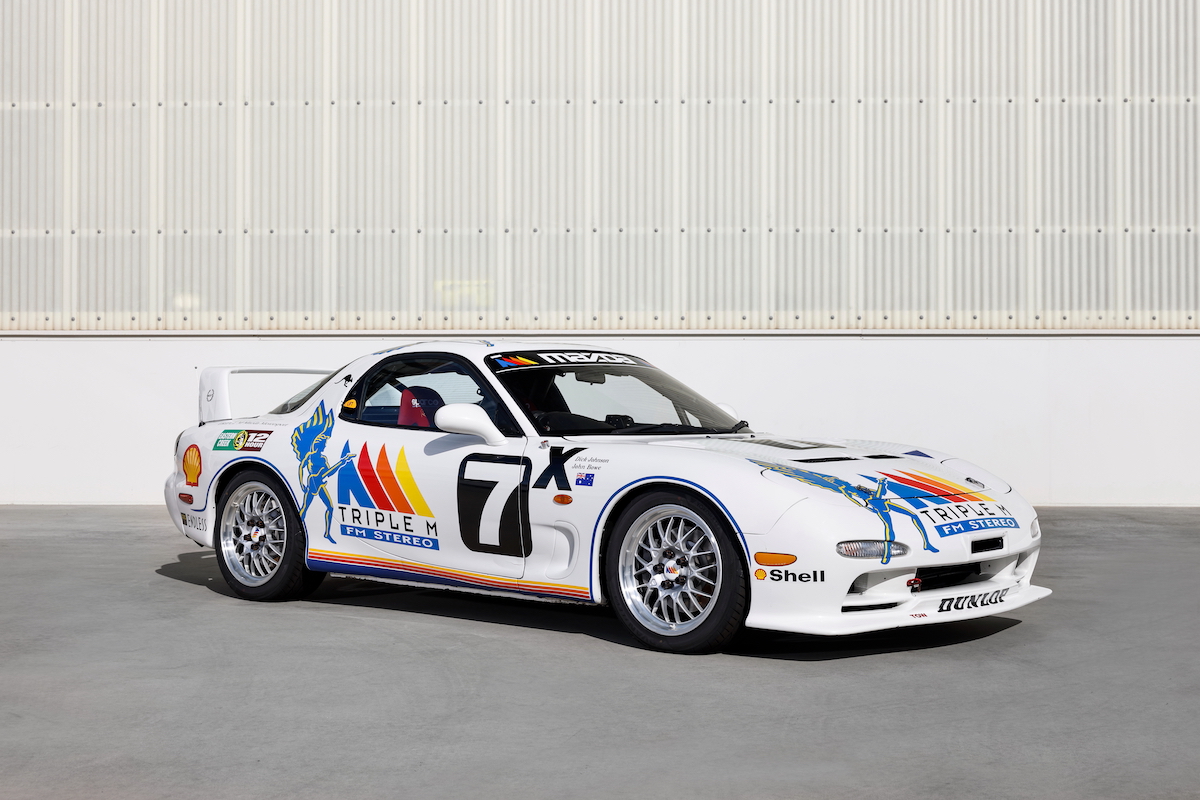A popular urban myth from the 1960s claimed that the Prince Motor Company – soon to be absorbed by Nissan – had named one of its models after a challenging section of Bathurst’s Mt Panorama race circuit.
Sadly, that wasn’t true, but two decades later we would see Nissan Skylines of various kinds battling for Bathurst 1000 glory, culminating in sequential wins (1991-92) by the pairing of Jim Richards/Mark Skaife.
The cars they used were R32 Skyline GT-Rs, a model more familiar to Australians than the re-engineered and restyled R34 version available from 1998. No R34s were sold new in Australia, but shiploads of stock comprising two- and four door-versions with 2.5-litre six-cylinder engines plus the 2.6-litre twin-turbo GT-R were, within a year of their JDM (Japanese Domestic Market) launch, arriving on specialist sales sites.
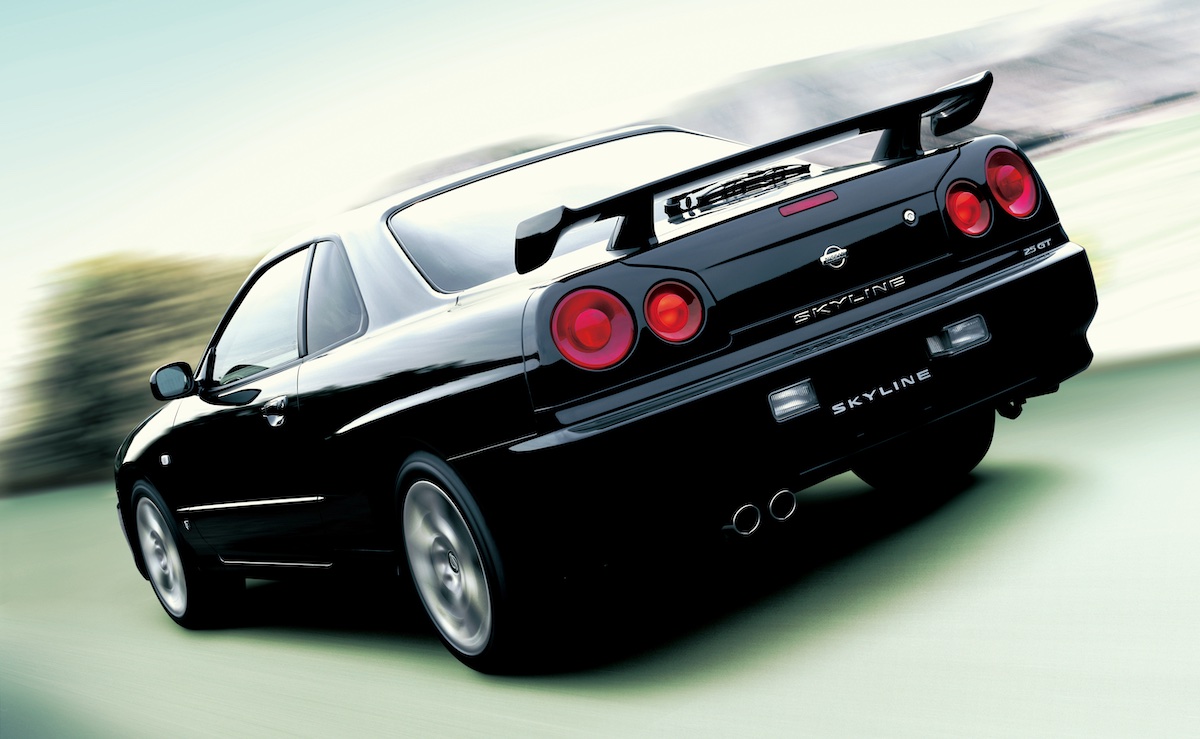
The R34 looked to be a smaller car than the superseded R33, and indeed it was. The wheelbase was 55mm less than on the previous model and the car 60mm shorter overall. A sheet metal makeover delivered front-end styling that was more angular and aggressive, with reshaped headlamps and a new air-dam.
The rear mudguards incorporated a ‘stepped’ design, while the rear panel featured circular ‘after-burner’ tail-lamps positioned below a prominent boot spoiler.
R34 GTs typically use 24-valve, double overhead cam versions of the 2.5-litre engine and produce 149kW, or 209kW when turbocharged.
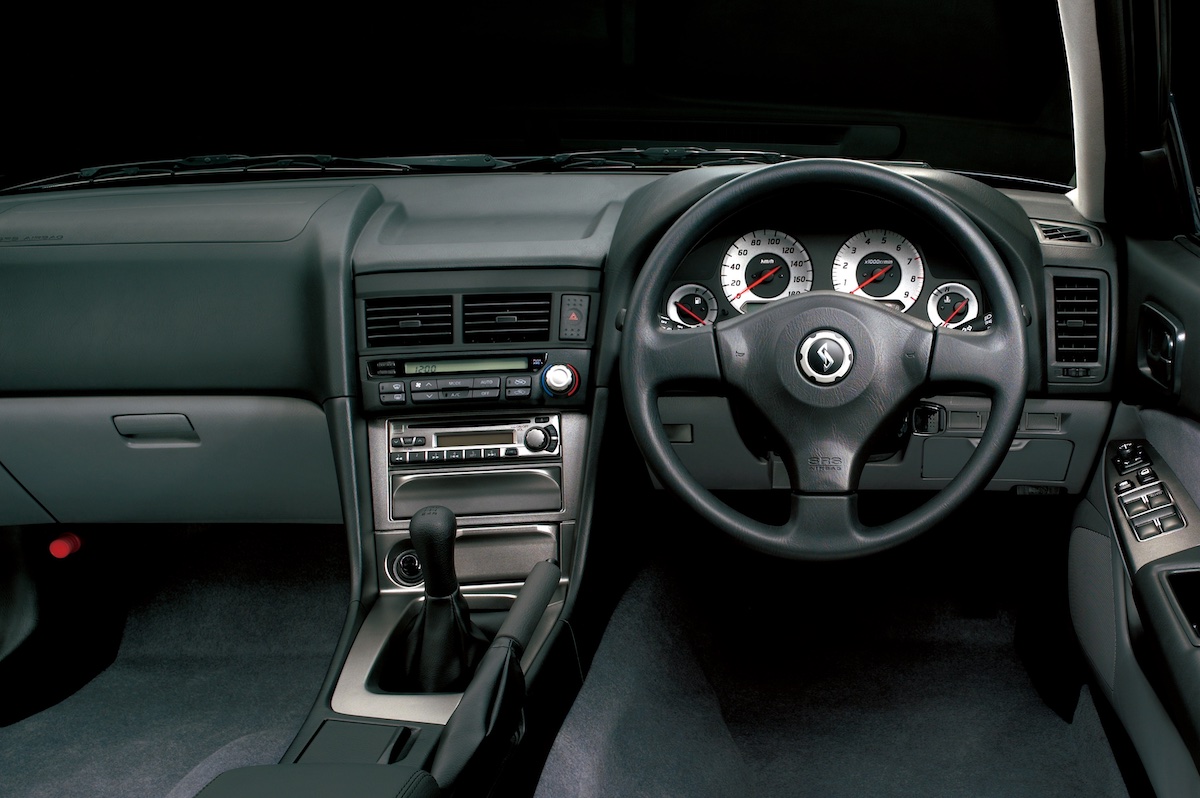
A five-speed manual transmission was standard on the R34 GT and GT Turbo, with a four-speed automatic available but not common in the cars seen here.
Despite its two-tone fabric trim and decently shaped seats, the R34 cabin was dominated by grey plastics and an uninspiring dash. GT versions gained a decent leather-bound and chunky steering wheel.
Air-conditioning, electric windows and mirrors were standard, so too electrically-activated HiCAS rear-wheel steering which some owners choose to deactivate.
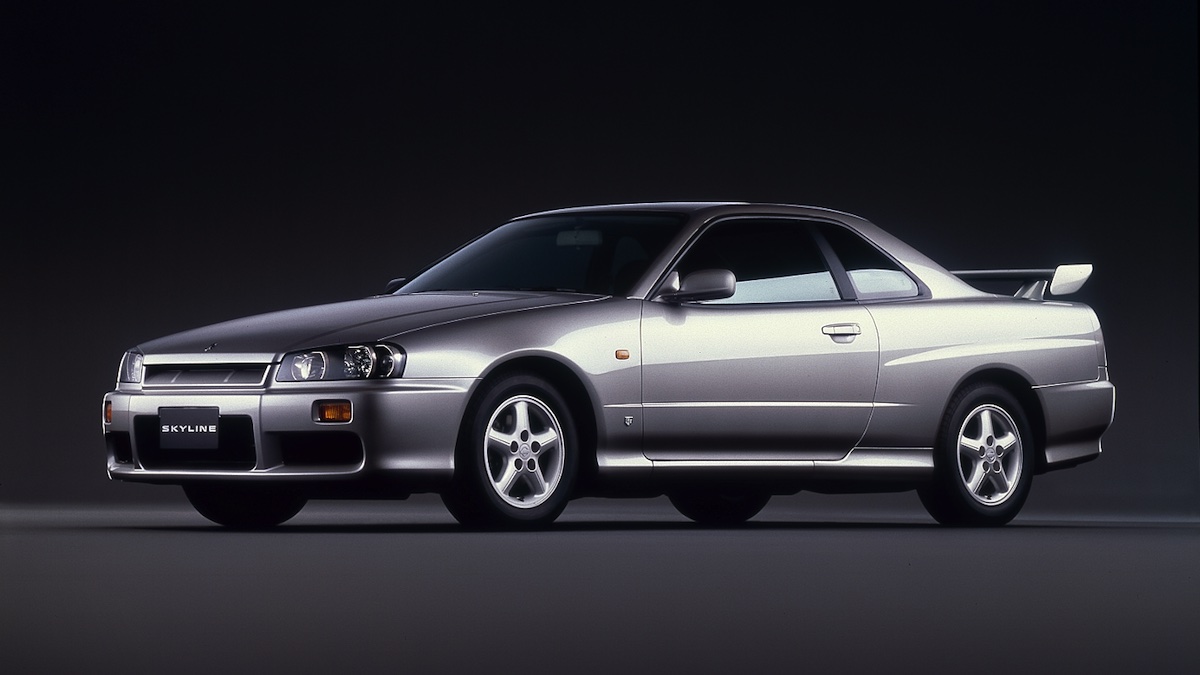
The 2.5-litre turbocharged engine is a willing worker with decent low-end torque and minimal turbo lag. However, the turbo version needs to be in its preferred 4500-7000rpm rev range to deliver peak performance. At 4500rpm in a standard GT-T, boost increases from 5psi to 7psi and hangs on until the cutout.
R34 suspension delivers a decent ride in suburbia and exudes confidence in high-speed bends. The all-wheel disc brakes are adequate for a car of the R34’s weight and ABS is standard. The standard rubber is 225-section on 17-inch rims, a combination seen by some owners as a little skimpy and many cars in today’s market will sport larger wheel and tyre combinations.
The money sought by R34 vendors surged during 2021-22 and some Turbo coupes do remain at above $50,000. Those cars aren’t likely to sell quickly, especially when good ones are available at $35,000-40,000.
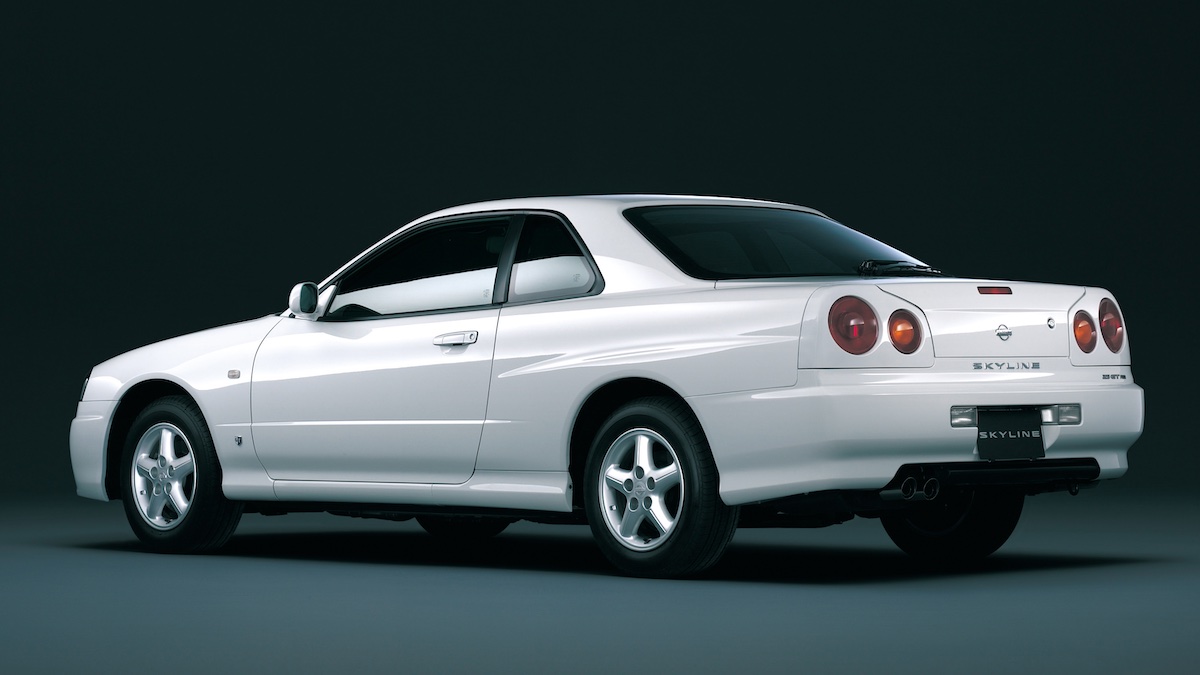
Things To Watch Out for When Buying a Used Nissan Skyline R34 (1998-2002)
- Complete maintenance records are essential. Turbo engine oil and filters should be changed, religiously, every 5000 kilometres.
- Avoid cars that show signs of overheating, coolant or oil leaks.
- Headlights with tarnished reflectors and cloudy covers are costly to replace.
- Check the lower edges of the air dam for cracks and kerb strikes.
- Budget for a front-brake replacement unless rotors are less than 40,000km old.
- Test the electric windows to ensure they operate smoothly with no marks on the glass to suggest the mechanism is binding.
Valuation Timeline: Nissan Skyline R34 (1998-2002)
-
2005$31,500
-
2010$24,000-23.81%
-
2015$18,500-22.92%
-
2020$22,500+21.62%
-
2025$42,250+87.78%R34 GT-T Coupe

